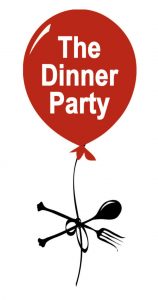 Though I help others craft their value propositions and enhance the way they communicate their personal brands, I recently recognized that I might need my own refresher course. I was at a dinner event last week and faced the inevitable question: “Tell me about what you do.” I found myself in the trap of brushing off the question, assuming it was a polite conversation-starter. You know…mandatory cocktail-party banter. I gave a quick answer and moved on to the next topic. Later that evening, a friend delicately pointed out that I hadn’t genuinely described what I do so that others could understand my value. She was right. It was a missed opportunity.
Though I help others craft their value propositions and enhance the way they communicate their personal brands, I recently recognized that I might need my own refresher course. I was at a dinner event last week and faced the inevitable question: “Tell me about what you do.” I found myself in the trap of brushing off the question, assuming it was a polite conversation-starter. You know…mandatory cocktail-party banter. I gave a quick answer and moved on to the next topic. Later that evening, a friend delicately pointed out that I hadn’t genuinely described what I do so that others could understand my value. She was right. It was a missed opportunity.
After reflecting on that situation, I realized that we can all get into a rut when it comes to sharing our value propositions with the people around us. I have spent much of the last year promoting my book, which helps professionals to understand the way they are perceived by others in the workplace and the impact that can have on their careers. A big part of the book’s success stems from using stories and case studies to vividly illustrate key points – an important thing to remember the next time someone asks me what I do.
If given the opportunity for a do-over, I might say something like this… While my book targets individuals, the majority of my work is actually done with corporate groups to help them develop and strengthen their leadership brands. I recently completed an engagement for a Fortune 500 high-tech company, leading a two-day workshop on-site for the organization’s next-level leaders (rising stars or “high-potentials”). During those interactive sessions, I helped the company to maximize its high-potential talent by working with participants to develop their intangible business skills. Things like communication and global and generational collaboration. Self-awareness and perspective taking. Adaptability and impulse control. These attributes are often overlooked in the realm of professional development, but research clearly proves they are required for career success.
The company that hired me recognizes that helping their fast-track employees enhance their technical and functional skills is only part of the solution. The people who emerge to effectively lead the company in the years ahead will be the ones who also have this intangible skill set–allowing them to motivate and inspire teams, influence decisions, and remain flexible during rapidly changing market conditions.
As part of my workshop with these corporate high-potentials, I guided the participants through a proprietary process that allowed them to analyze their intangible skills in a unique, measurable way:
• Understanding the time-tested and most studied leadership success factors (not just the art, but the science behind these factors)
• Assessing themselves against those proven success factors and discovering how colleagues and co-workers would assess them in comparison
• Developing specific strategies and tactics to move toward closing the gaps between the desired and actual perceptions of their leadership brands
Ironically perhaps, I offer a very tangible and quantitative approach to improving intangible skills.
Using stories to “paint a picture” of what we do brings our value propositions to life for the people around us. For years, I’ve told my coaching clients about the value of incorporating that technique. My experience last week was a bold reminder that I really should follow my own career advice.

Great read. Very insightful. Thank you for sharing. I need to take your advice. It’s time to take another look at my value proposition. – Cheers